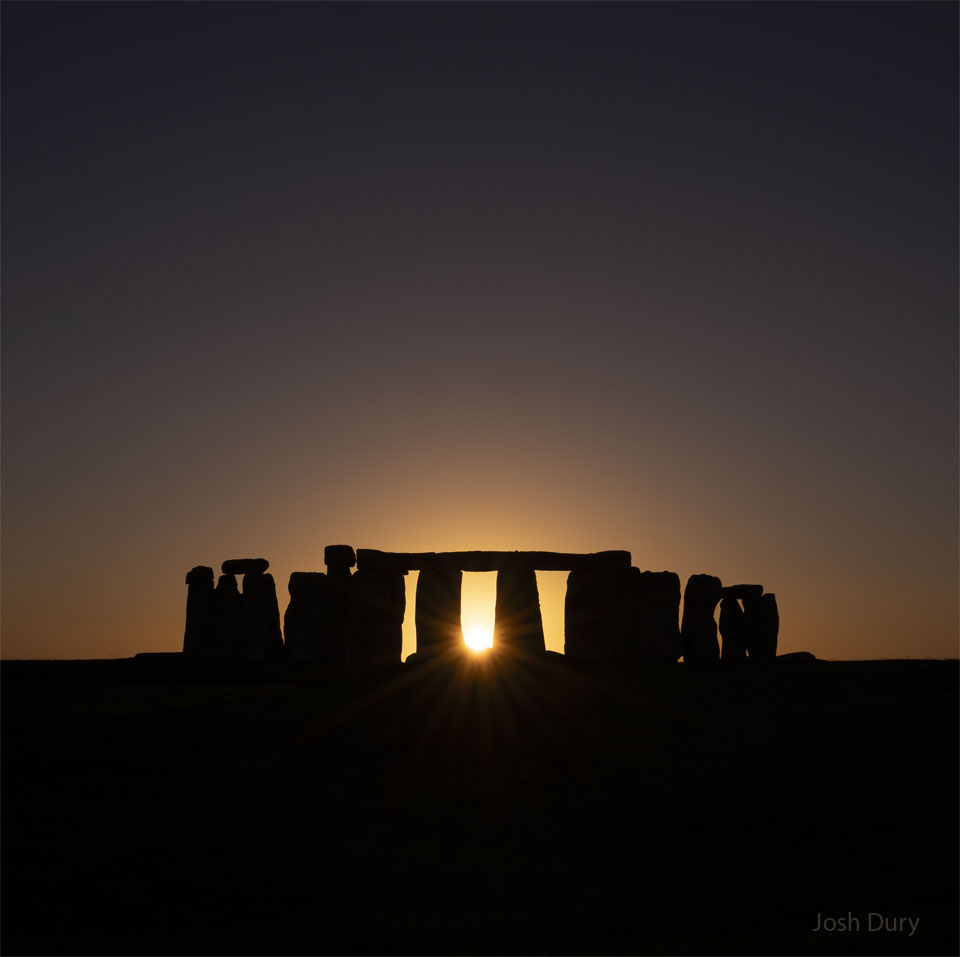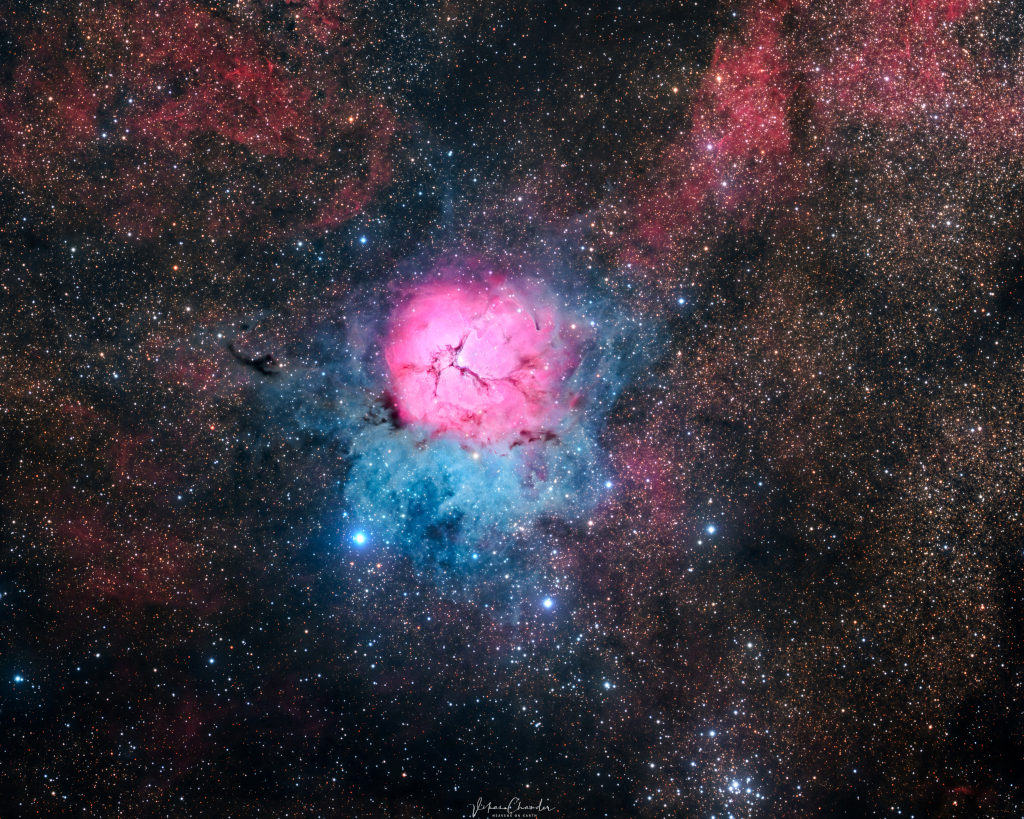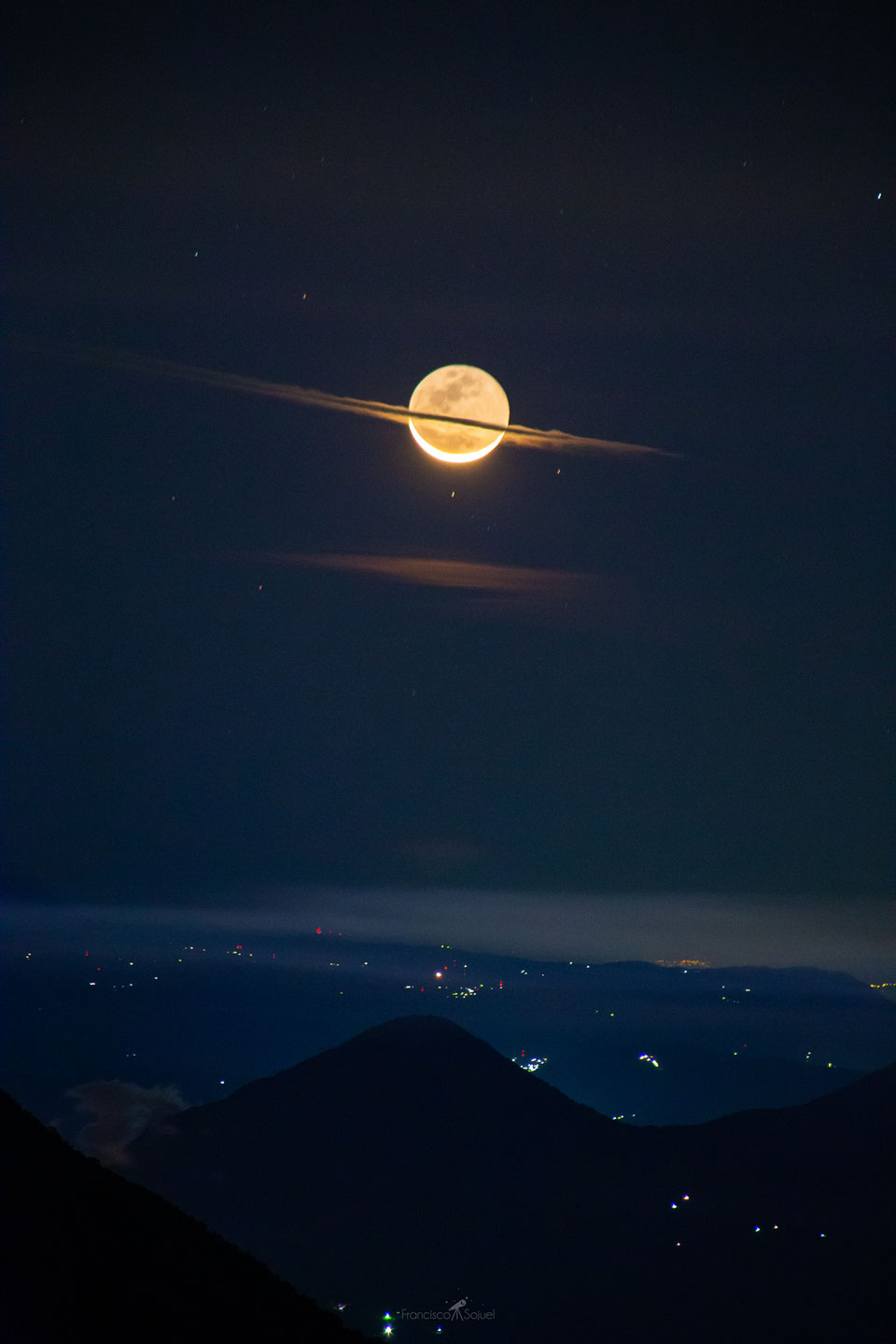© James Woodend, Flickr
Nombre total de pages vues
06/08/2022
ASTROPHOTOGRAPHIE - Terre et Espace
© James Woodend, Flickr
ASTRONOMY - Stereo Phobos
2022 August 6
Image Credit: G. Neukum (FU Berlin) et al., Mars Express, DLR, ESA
Explanation: Get out your red/blue glasses and float next to Phobos, grooved moon of Mars! Captured in 2004 by the High Resolution Stereo Camera on board ESA's Mars Express spacecraft, the image data was recorded at a distance of about 200 kilometers from the martian moon. This tantalizing stereo anaglyph view shows the Mars-facing side of Phobos. It highlights the asteroid-like moon's cratered and grooved surface. Up to hundreds of meters wide, the mysterious grooves may be related to the impact that created Stickney crater, the large crater at the left. Stickney crater is about 10 kilometers across, while Phobos itself is only around 27 kilometers across at its widest point.
05/08/2022
ASTRONOMY - A Beautiful Trifid
2022 August 5
Image Credit & Copyright: Vikas Chander
Explanation: The beautiful Trifid Nebula is a cosmic study in contrasts. Also known as M20, it lies about 5,000 light-years away toward the nebula rich constellation Sagittarius. A star forming region in the plane of our galaxy, the Trifid does illustrate three different types of astronomical nebulae; red emission nebulae dominated by light from hydrogen atoms, blue reflection nebulae produced by dust reflecting starlight, and dark nebulae where dense dust clouds appear in silhouette. But the red emission region, roughly separated into three parts by obscuring dust lanes, is what lends the Trifid its popular name. Pillars and jets sculpted by newborn stars, above and right of the emission nebula's center, appear in famous Hubble Space Telescope close-up images of the region. The Trifid Nebula is about 40 light-years across. Too faint to be seen by the unaided eye, it almost covers the area of a full moon in planet Earth's sky. Open star cluster M21 just peeks into this telescopic field of view along the bottom right edge of the frame.
04/08/2022
AERONAUTIQUE - L’inventeur Franky Zapata présente son aéronef à décollage vertical
ASTRONOMY - M13: The Great Globular Cluster in Hercules
2022 August 4
Image Credit & Copyright: Joan Josep Isach Cogollos
Explanation: In 1716, English astronomer Edmond Halley noted, "This is but a little Patch, but it shows itself to the naked Eye, when the Sky is serene and the Moon absent." Of course, M13 is now less modestly recognized as the Great Globular Cluster in Hercules, one of the brightest globular star clusters in the northern sky. Sharp telescopic views like this one reveal the spectacular cluster's hundreds of thousands of stars. At a distance of 25,000 light-years, the cluster stars crowd into a region 150 light-years in diameter. Approaching the cluster core upwards of 100 stars could be contained in a cube just 3 light-years on a side. For comparison, the closest star to the Sun is over 4 light-years away. The remarkable range of brightness recorded in this image follows stars into the dense cluster core. Distant background galaxies in the medium-wide field of view include NGC 6207 at the upper left.
03/08/2022
LA VOIE LACTEE SUR TERRE - Italie : le Seiser Alm au Tyrol
MERVEILLEUX MONDE SOUS-MARIN - L'anémone Heteractis magnifica
ASTROPHOTOGRAPHIE - La comète C/2013 A1 rencontre Mars
ASTRONOMY - Halo of the Cat's Eye
2022 August 3
Image Credit & Copyright: Bray Falls
Explanation: What created the unusual halo around the Cat's Eye nebula? No one is sure. What is sure is that the Cat's Eye Nebula (NGC 6543) is one of the best known planetary nebulae on the sky. Although haunting symmetries are seen in the bright central region, this image was taken to feature its intricately structured outer halo, which spans over three light-years across. Planetary nebulae have long been appreciated as a final phase in the life of a Sun-like star. Only recently however, have some planetaries been found to have expansive halos, likely formed from material shrugged off during earlier puzzling episodes in the star's evolution. While the planetary nebula phase is thought to last for around 10,000 years, astronomers estimate the age of the outer filamentary portions of the Cat's Eye Nebula's halo to be 50,000 to 90,000 years.
02/08/2022
ASTRONOMY - A Moon Dressed Like Saturn
2022 August 2
Image Credit & Copyright: Francisco Sojuel
Explanation: Why does Saturn appear so big? It doesn't -- what is pictured are foreground clouds on Earth crossing in front of the Moon. The Moon shows a slight crescent phase with most of its surface visible by reflected Earthlight known as ashen glow. The Sun directly illuminates the brightly lit lunar crescent from the bottom, which means that the Sun must be below the horizon and so the image was taken before sunrise. This double take-inducing picture was captured on 2019 December 24, two days before the Moon slid in front of the Sun to create a solar eclipse. In the foreground, lights from small Guatemalan towns are visible behind the huge volcano Pacaya.
ASTRONOMY - Sunset Solstice over Stonehenge
2025 December 22 Sunset Solstice over Stonehenge Image Credit & Copyright: English Heritage , Josh Dury Explanation: Yesterday the Su...

-
2022 September 26 All the Water on Planet Earth Illustration Credit: Jack Cook, Adam Nieman, Woods Hole Oceanographic Institution ; Data ...
-
2025 May 11 The Surface of Venus from Venera 14 Image Credit: Soviet Planetary Exploration Program , Venera 14 ; Processing & Copyri...








